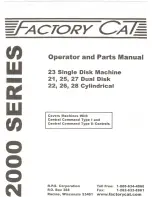
21 Changi South Street 1 Singapore 486777 Phone: +65 65420833 Fax: +65 65426920
E-mail: [email protected] Website:
www.escoglobal.com/ductless
APPENDIX
B.2 PROCEDURE
1. Determine the air volume flow rate through the fume cupboard and record the value as F
a
in
m
3
/min.
2. Pour about 100 ml of propan-2-ol into a preweighted, stoppered, conical flask containing a few
anti-bump granules. Record the weight of solvent added as M
1
in gram.
3. Set up the hotplate in the fume cupboard. Switch on the fume cupboard, remove the stopper
from the flask and place the flask in on the hotplate.
4. As the propan-2-ol begins to boils, the vapour condenses on the cooler parts of the flask forming
a boundary line. When the boundary reaches the top of the flask, start the stop clock.
5. After 60s, take a reading of the concentration of propan-2-ol in the exhaust gas emitted by the
fume cupboard using a gas detection kit with a suitable tube. Repeat the measurement at 5 min.
record the highest concentration in ppm. Convert the concentration from ppm to mg/m
3
using the
formula below and record as C
e
in mg/m3.
6. When the last of the propan-2-ol has evaporated, stop the clock, noting the time of the run as t in
second.
B.3 CALCULATION
Calculate the total volume V
a
in m
3
of air passed through the fume cupboard during the test as follows:
V
a
= F
a
t / 60
Caculate the challenge concentration in mg/m
3
:
C
o
= 1000 M
1
/ V
a
Calculate the filter efficiency (%):
Filter efficiency = 100 (C
o
- C
e
) / C
o
Conversion from ppm to mg/m
3
:
Concentration in mg/m
3
= Concentration in ppm x 60.1 / 24
75
Содержание ASCENT OPTI BASIC
Страница 2: ......
Страница 88: ...This page has been intentionally left blank...












































